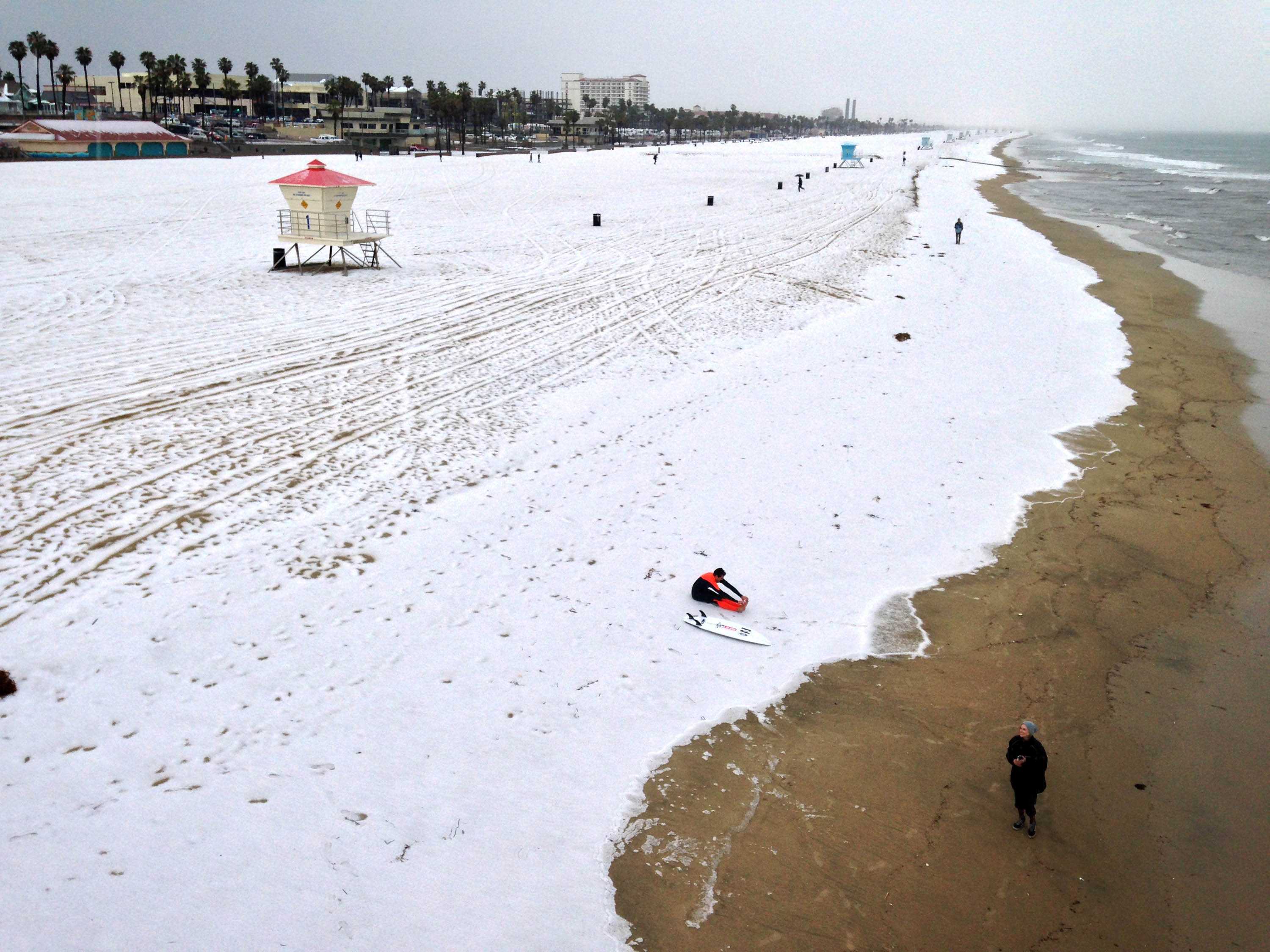A thunderstorm on Monday morning quenched Southern California, but along with it came an icy surprise brewed by the perfect potion for precipitation.
With the right combination of moisture and wind, hail momentarily replaced torrents of rain in Los Angeles at around 11 a.m. Monday.
“It is a little unusual in Southern California, less usual than in other parts of the country,” Dr. David Pepper of the California State University, Long Beach geography department said.
Thunderstorms materialize from low-pressure systems that form when warm, moist air rises from the Earth’s surface, according to the department of atmospheric sciences at Texas A&M University.
Pepper said the low-pressure system creates a “mid-latitude cyclone” that pushes air up through the center and directly into the atmosphere. Low-pressure systems differ from high-pressure systems, which have the opposite effect and usually produce the clear skies that Long Beach boasts for the majority of the year.
“[In a low pressure system,] air is rising in the center, and air at the surface is rushing in to fill the space as the air in the center rises,” Pepper said. “This causes winds to start to rotate.”
Quickly rising winds, or updrafts, combine with condensation of moist vapor to form cumulonimbus clouds. These build further up into the atmosphere, where it is much colder than at the earth’s surface.
While Long Beach’s streets were around 55 degrees, the clouds above were below freezing, which made the water droplets in the clouds freeze into ice crystals.
“The mechanism is, that these small ice crystals fall, and updrafts carry them back up and keep making them bigger,” Pepper said.
As the updrafts continually churn the ice crystals back up into the freezing clouds, the crystals accumulate more layers of ice, getting larger until the force of the up-moving wind can no longer support their weight. The icy nuggets will then fall to the ground.
The stronger the updraft, the larger the hailstones tend to be.
Although the storm mainly white washed the shores of Huntington Beach, Pepper said the Great Plains would be the ideal terrain for these conditions, because there is a lesser chance that mountains would obstruct the updrafts.
“In the western U.S., there’s often not enough moisture to have really big thunderstorm clouds,” he said.
Pepper said that for meteorologists, forecasting its location is still fairly difficult.
“I think the biggest hailstorm I remember in this general area was in South LA near Watts a few years ago,” he said. “It can really happen anywhere.”
While Long Beach was hit with a brief storm, the mountains were gathering snow. Pepper said that although the icy pebbles and snowflakes may seem to be related, they form through completely different processes.
Snow falls under slightly drier conditions when the atmospheric temperature is below freezing, according to the National Snow and Ice Data Center. The difference between snow and hail is that, snow crystals grow by absorbing surrounding water droplets and fall once they get heavy enough, and unlike hail stones, are not pushed back up into the clouds. Unlike hail, Fluffy snowflakes fall most often in the mountains, where the peaks block winds that would otherwise break apart the ice crystals.
Some CSULB students were able to catch a glimpse, or at least an earful, of the quick hailstorm.
Richard Manly, a CSULB Alumnus and senior writer at CSULB university relations, said he was completely caught off guard by the hailstorm.
“This is historic,” Manly said. “I understand it even hailed down in Huntington Beach. When was the last time that ever happened?”
Katy Gneier, a customer service representative at the 49er bookstore, said that the sounds and sight of hail bouncing all over campus made she and fellow students uneasy.
“We always get a lot of people who kind of panic any time water of any sort starts to fall from the sky,” Gneier said, “and so we tend to sell a bunch [of umbrellas].”




